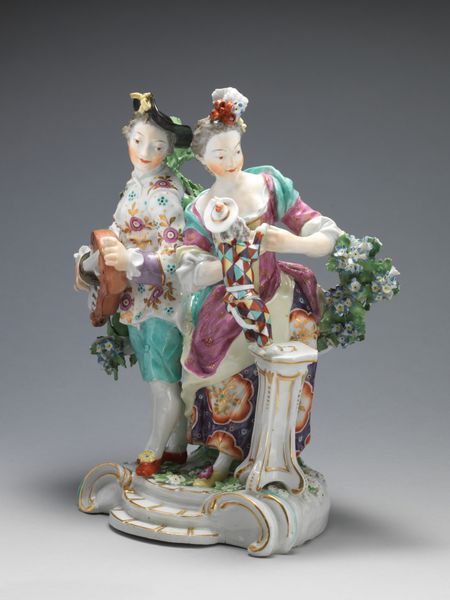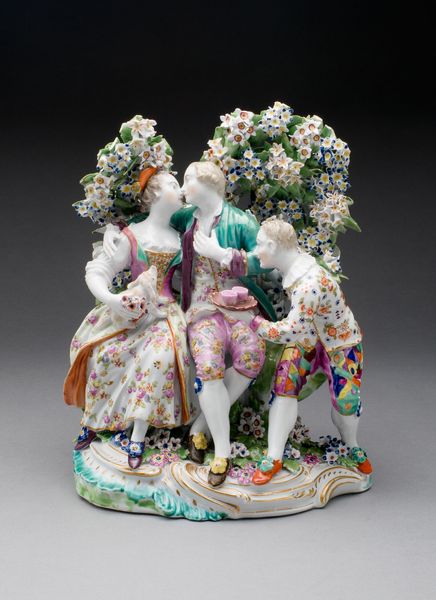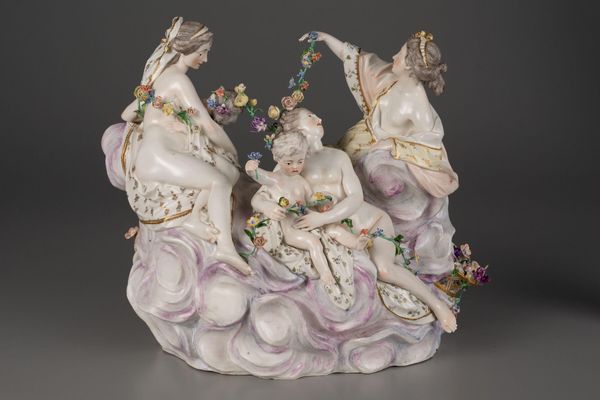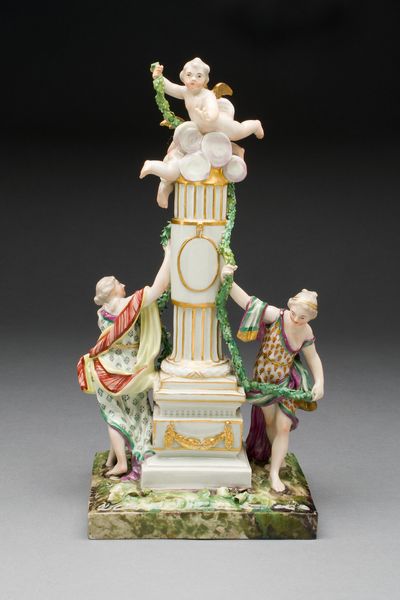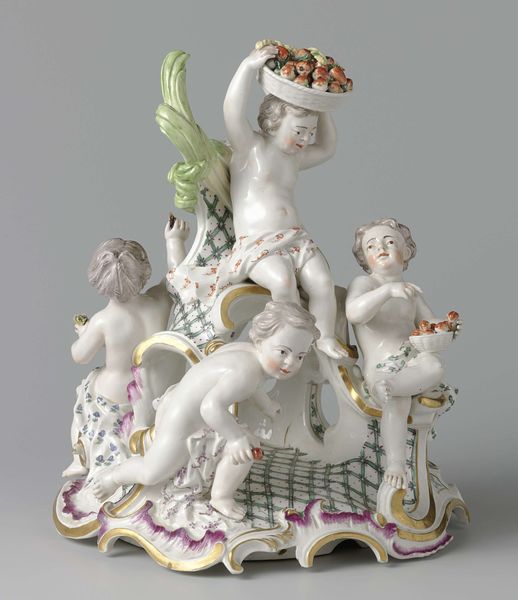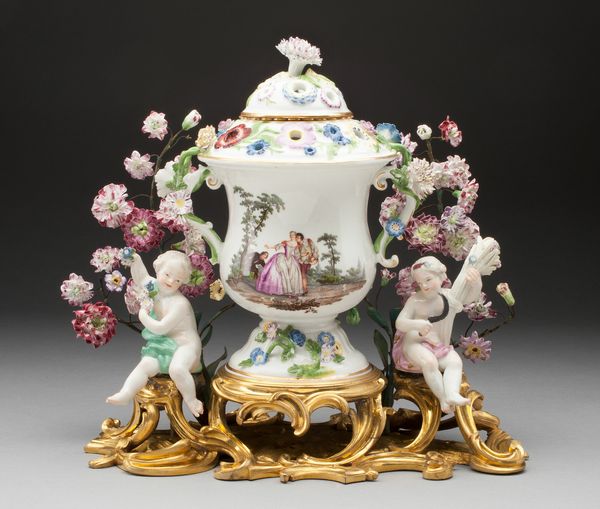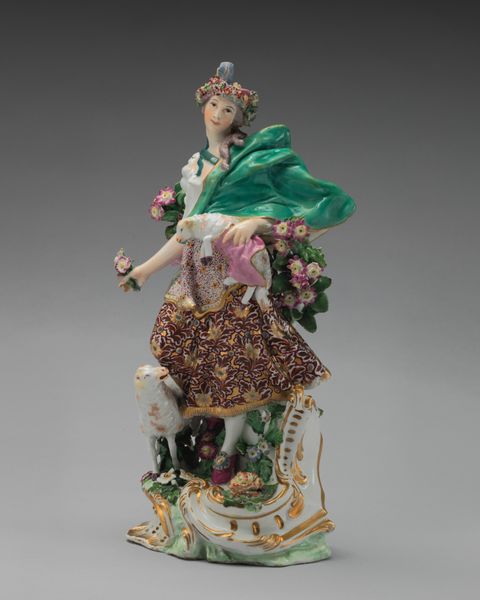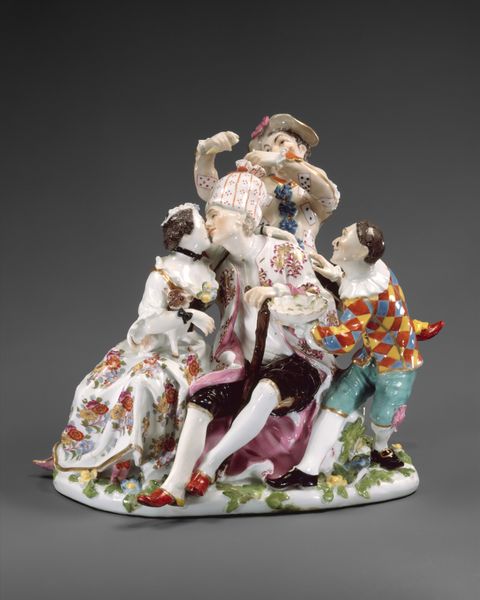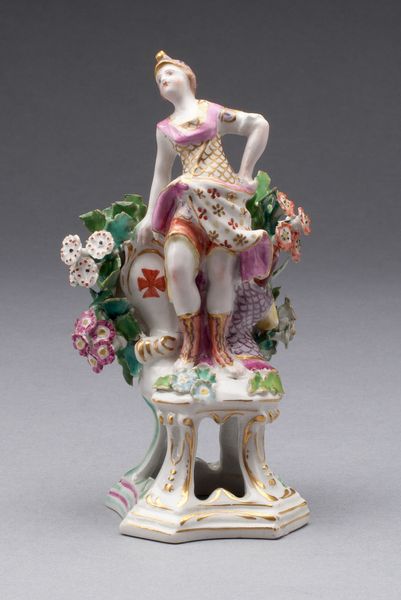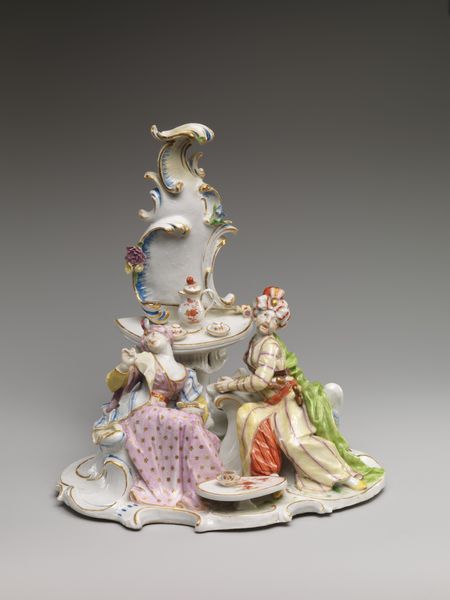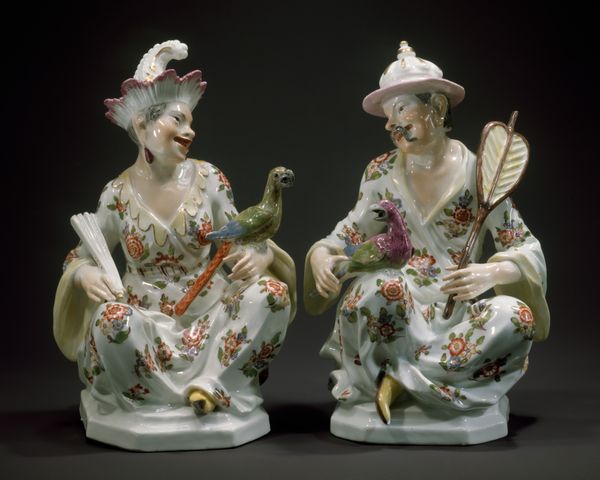
ceramic, porcelain, sculpture
#
sculpture
#
ceramic
#
porcelain
#
figuration
#
sculpture
#
group-portraits
#
genre-painting
#
decorative-art
#
decorative art
#
rococo
Dimensions: Height: 6 1/4 in. (15.9 cm)
Copyright: Public Domain
Curator: Look at the sinuous grace of this porcelain sculpture titled "Pas de Trois," crafted sometime between 1758 and 1768 by the Ludwigsburg Porcelain Manufactory. The medium just sings with Rococo extravagance, doesn't it? Editor: It does, although what immediately strikes me is how this dainty, decorative tableau, seemingly a celebration, feels somewhat restrained. Is it the poses or the fixed smiles? There's something... prescribed about this revelry. Curator: Indeed, the scene depicts a carefully constructed world of leisure, a performance of aristocratic pleasure. This was an era grappling with societal shifts; pieces like this become potent symbols, masking deeper complexities with elegance. Editor: Masking them with floral garlands, literally! Look at how the central figure is entwined; how those spring wreaths are mirrored on the dancers' heads. It is about tradition. It hints to the dance of courtship and established roles, like living symbols playing out a well-rehearsed social script. Curator: I agree, and in those prescribed roles we can also find traces of desire, expectations placed upon gender, and anxieties surrounding status. Notice the way the male figures almost frame the central female figure. Editor: Right, this trio embodies ideal forms—perhaps even societal expectations rather than individual likeness. Do you see that slight blush on the gentlemen's clothing—the pinks and mauves—they play with both strength and softness. The artists crafted the nuances carefully for particular effect. Curator: Exactly, color choices weren't accidental. These works of decorative art can become mirrors reflecting a specific era’s fascination with appearance and hierarchy. Even the materials, the fragility of the porcelain, alluding to the precious and carefully managed. Editor: So, while its beauty draws the eye, "Pas de Trois" invites us to look beyond that beauty—beyond the apparent carefree dance. It lets us understand how, even in the decorative arts, messages about societal values persist. Curator: Precisely. It serves as a potent visual archive, subtly encoding its cultural moment into the very fabric of its being. Editor: A delicate but durable record of human interaction...preserved in porcelain!
Comments
No comments
Be the first to comment and join the conversation on the ultimate creative platform.
